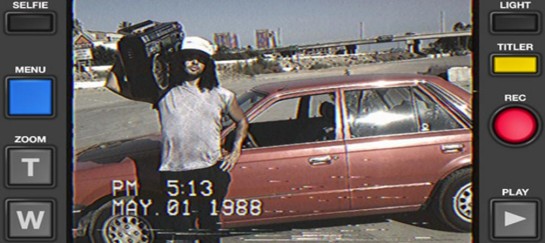
Why You Need A Portable Baby Monitor as Parent
A portable baby monitor is a device that provides parents and caregivers the ability to see and or hear their child. A parent can keep an eye on their child while they are sleeping in another room of the house, doing chores around the home, or even when they are out running errands. There are many different types of monitors that allow you to view from various distances with different features.
Types of Monitors
There are two main types of baby monitors, traditional video screens and wireless audio monitors. Both have their pros and cons depending on your needs & personal preferences:
Traditional Video Screens
Traditional video screens have a camera attached to them which allows you to see what your child is doing at all times when you’re not able to be in the same room. They also have a screen that shows a view of what the camera is receiving when you are watching your child. Traditional video monitors have varying degrees of quality depending on which one you purchase but do tend to be more affordable than their wireless counterparts. Depending on where you want to place it within the house and set-up, traditional screens can be pretty big and intrusive & may not fit into every area of your home or workspace.
Portable Baby Monitor
Wireless Audio Screens
Wireless audio screens function similarly to traditional video screens with the option of being able to listen to what’s going on in the baby’s room as well as talkback for reassurance. However, they do not allow you to see what’s going on in the baby’s room like traditional video screens. Wireless audio screens are smaller than traditional screens and are powered by a rechargeable battery pack. The quality of sound from wireless audio monitors is often preferred by parents because it has the ability to separate different sounds, so if there are other noises happening in the home or outside of your house, it can filter out the noise allowing you to hear your child if they need you.
Features
Regardless of which type of monitor you purchase, most will have some features in common:
• Night Light. This feature allows you to look at your screen without having to turn on the lights while checking on your baby.
• Vibrating Pager/Alarm. A vibrating pager or alarm will beep when the baby is making noise. Some parents prefer this feature because it can provide a sense of reassurance that your child is sleeping soundly without you needing to constantly monitor them.
• Microphone. The microphone allows you to communicate with your child if they wake up, cry out for their parent, or need help in some other way.
• Temperature Readings. This allows you to check the temperature of the room from afar and make sure that baby isn’t too hot or cold, as well as alerting you if there’s an issue with the thermostat system in place.
• Security Camera/Monitor. Some monitors have the ability to double as security cameras, allowing you to keep an eye on your child & your home at the same time.
• Two Way Communication. When using a video screen, having the ability to communicate two-way with your child is crucial to reassuring them that all is well or alerting you when they need you; without it, traditional monitors become almost useless in terms of functionality and practicality.
• Frequency/Channel Scanning Feature. This feature allows you to scan available frequencies for interference from other wireless devices in your home, as well as help prevent any unauthorized users from being able to listen to your conversation with the baby. Some wireless audio portable monitors have this feature built-in, while others will require a transmitter-receiver combination separate from the monitor unit if you’re looking for something with this kind of specific function.
• Battery Life Alert/Low Battery. This feature alerts you when the battery in your monitor is running low & allows you to either change it immediately or continue using your monitor until you are able to do so.
• Distance Indicator. The distance indicator shows how far away from the camera baby’s room is. Some monitors have this feature; others don’t.
• Voice Activated Option. This function will speak for baby or play lullabies if there’s no sound coming from the baby and gives parents a sense of security if they’re not always within earshot of their child while he or she sleeps.
Cost-Effectiveness
In terms of cost-effectiveness & practicality, wireless screens beat traditional video screens hands down due to their portability, as they don’t require a constant electrical connection. Video screens cost much more than their audio counterparts because they have an internal video camera that transmits signals; when you pair this with the receiver for the monitor and other accessories, there’s a lot of costs involved on top of the monitor itself that makes it very expensive over time.
The most cost-effective solution is to get a wireless portable audio screen because it contains everything you need in one small compact device without having to add additional parts and components that are unnecessary for basic functionality. Wireless audio monitors sit at around $50 from online stores, while video models can range anywhere between $200-$500 or even more for high-end products.
Daily Newsletter
Subscribe to Jebiga for a dose of the best in gear, design, rides, tech and adventure.






